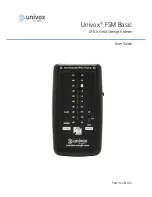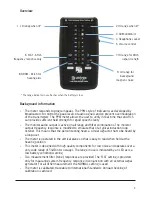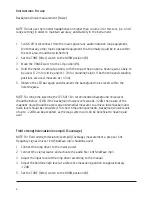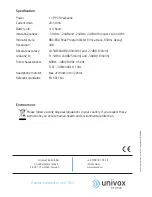
5
6� Move the RANGE switch to HI position (7)�
7� Hold the meter in vertical position with the top at the listening height and measure
the variation (field strength deviation) within the listening area� Confirm that the field
strength does not deviate by more than ±3dB�
8� Measure the overspill distribution outside the loop area, if required� (NOTE: overspill is
not defined by the IEC 60118-4 but can be considered as magnetic field above -32dB�)
Basic frequency test (FQ)
NOTE 1: For Frequency test Univox MultiFreq�mp3 (the audio file includes 3 tones in the
following sequence: 2sec@1kHz; 1sec@silence, 2sec@100Hz; 2sec@5kHz), should be
used�
1� Activate the audio file MultiFreq�mp3�
2� The loop driver input level should be set according to the manual and the field strength
level adjusted to -12dB� Make sure that the output does NOT saturate, or clip�
3� Set the TONE (filter) switch to the FLAT position (6)�
4� The RANGE switch should be set to HI position (7)�
5� Hold the meter in a vertical position with the top at the listening height and measure
the frequency response for 100kHz, 1kHz and 5kHz� The frequency response for
100Hz to 5kHz should be within the range ±3dB with reference to the response at
1kHz� If the deviation is larger, try to adjust the frequency response with the drivers
MLC control, (refer to the driver´s manual)�
6� After any frequency adjustment(s), double-check that the loop driver delivers 400
mA/m (0dB) in program peaks, without clipping�
NOTE 2: It is not uncommon for certain locations within the area of a loop system to suffer
poor background noise, frequency response or signal strength, due to the surrounding
construction metal and layout of electrical services in a building� If the majority of the area
covered by the loop gives satisfactory signal to noise ratio then the poor areas may be
marked as not suitable for hearing aid users, as recommended by IEC 60118-4�


























